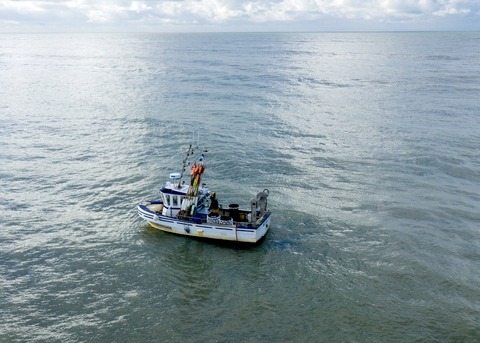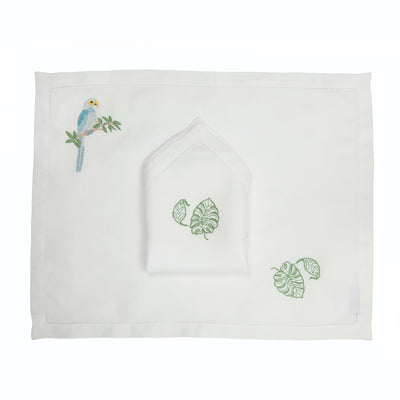Ikejime
Through this section, discover a specific know-how of a French heritage company with the highlighting: of a gesture, the tool to achieve it and the craftsman who executes it. The gesture, the tool, the actor.
Very quickly, this Japanese method of slaughtering fish became popular with many starred chefs and knowledgeable individuals. At stake, respect for the animal and, in fact, an incomparable quality of flesh. Explanations with the fisherman Benjamin Laborde.

Photo: Olivier Roux
Saint--Gilles-Croix-de-Vie. 10 miles away, along the coast, Benjamin Laborde has been surveying his lines since 2 a.m. Mainly sea bass, nine months of the year, and, less often, according to the seasons and by chance, lean fish, sea bream, pollock... For more than a year now, this Charentais has set up on his own . Every day that the sea permits, he goes out, before returning to port for a task just as important as longline fishing itself: ikejime. Ancestral in Japan, this slaughtering technique is based on the following observation: the better a fish is in shape and calm when it dies, the longer it will keep and will sublimate the organoleptic qualities of its flesh. So much for the theory, but what about the practice?
The gesture: The blow of the blade

The blow lasts a fraction of a second. Its purpose is to delay the natural degradation of the fish.
At the quay, on his boat, Benjamin Laborde seizes a bass in his tank, taking care not to rush it. Then, with a sure gesture, he inserts a hook called “tegaki” in Japanese between the two eyes of the fish, turns it 90° and raises it slightly. In no time at all, the bar is brainless. Follows the complete destruction of his nervous system along the spine, with the help of a metal rod introduced through the orifice made. Without a brain or spinal cord, the flesh does not receive the information that the fish is dead. Its degradation is therefore greatly delayed. Especially since the fisherman takes care to empty the bass of its blood through the gills into a basin of water. He then cools it in a second container filled with ice cream, then places it delicately in a tray, wraps it in film and ices it slightly again. Here it is ready to be sold at auction or to demanding restaurateurs like Jean-Marc Pérochon, the starred restaurant owner from Bretignolles-sur-Mer.
The tool: the tegaki

Behind this hook as thin as it is sharp, the tool necessary for a respectful death of the fish.
Benjamin Laborde got his from one of his clients. The fishmonger from the Parisian markets, Erwan Ranchoux, brought him this specimen with a wooden handle from Japan. A first. Until now, he had tegaki made entirely of metal, most often aluminum. Those that his ironworker makes for him at his request, with two watchwords: lightness, on the one hand, and the delicacy of the hook, on the other. Just to mark the fish as little as possible. Their respect, again.
Actor: Benjamin Laborde

Despite working hours and working conditions, a happy young fisherman.
Indirectly, this 30-year-old owes his passion to his grandparents. They left him a house in Saint-Gilles-Croix-de-Vie where the young man discovered his fishermen from generation to generation. What give him the desire to start. After 14 years as a sailor, this 30-year-old took the plunge and set up on his own in June 2018, with one idea in mind: to practice ikejime. After seeing a report on this particularly fish-friendly method, Benjamin Laborde promised to make it his own. So he trained with one of the pioneers of this technique in France, Daniel Kerdavid in Quiberon, before refining his gestures on the advice of another fisherman, Sandrine Thomas de Royan. Since then, Benjamin Laborde has displayed a smile. He would just dream of having a room in the port equipped with large tanks, allowing the fish to de-stress even longer than on his boat. Their respect, always.










